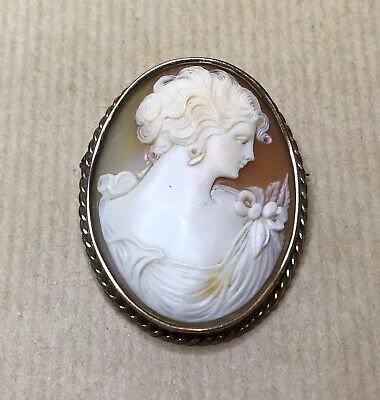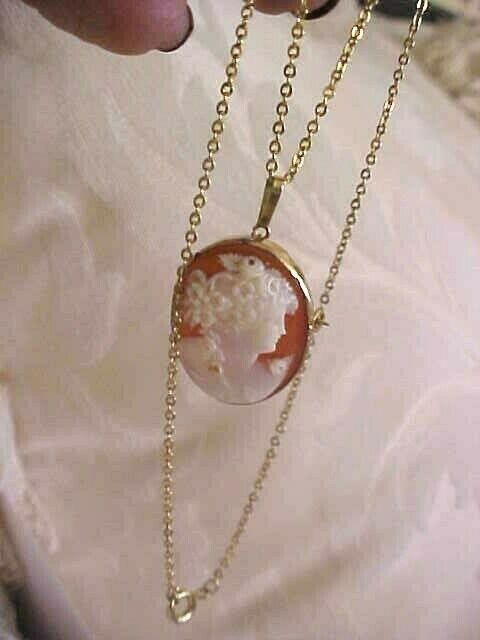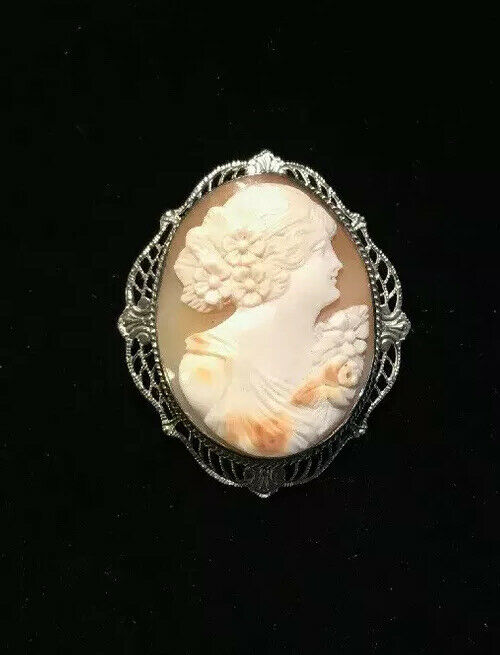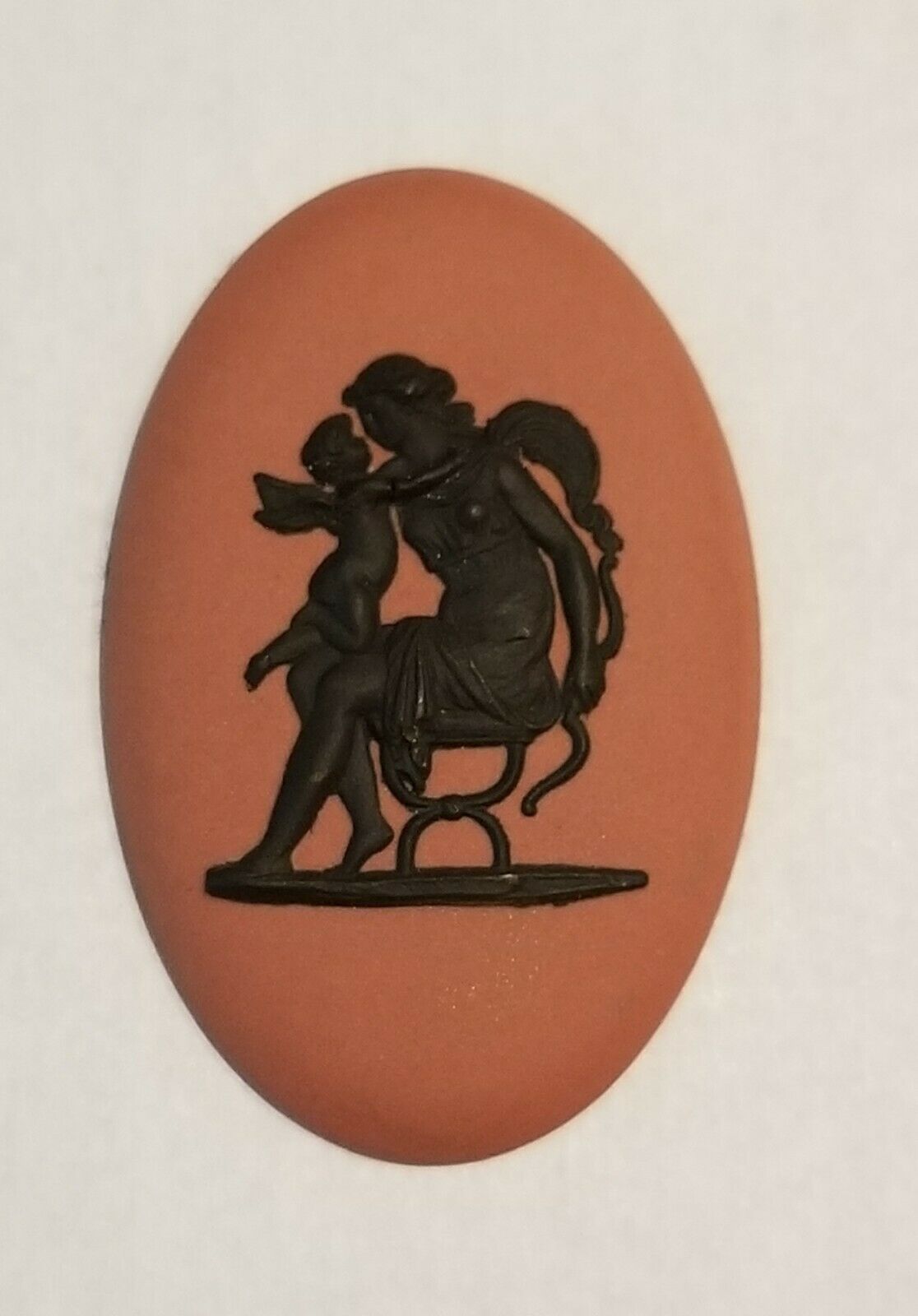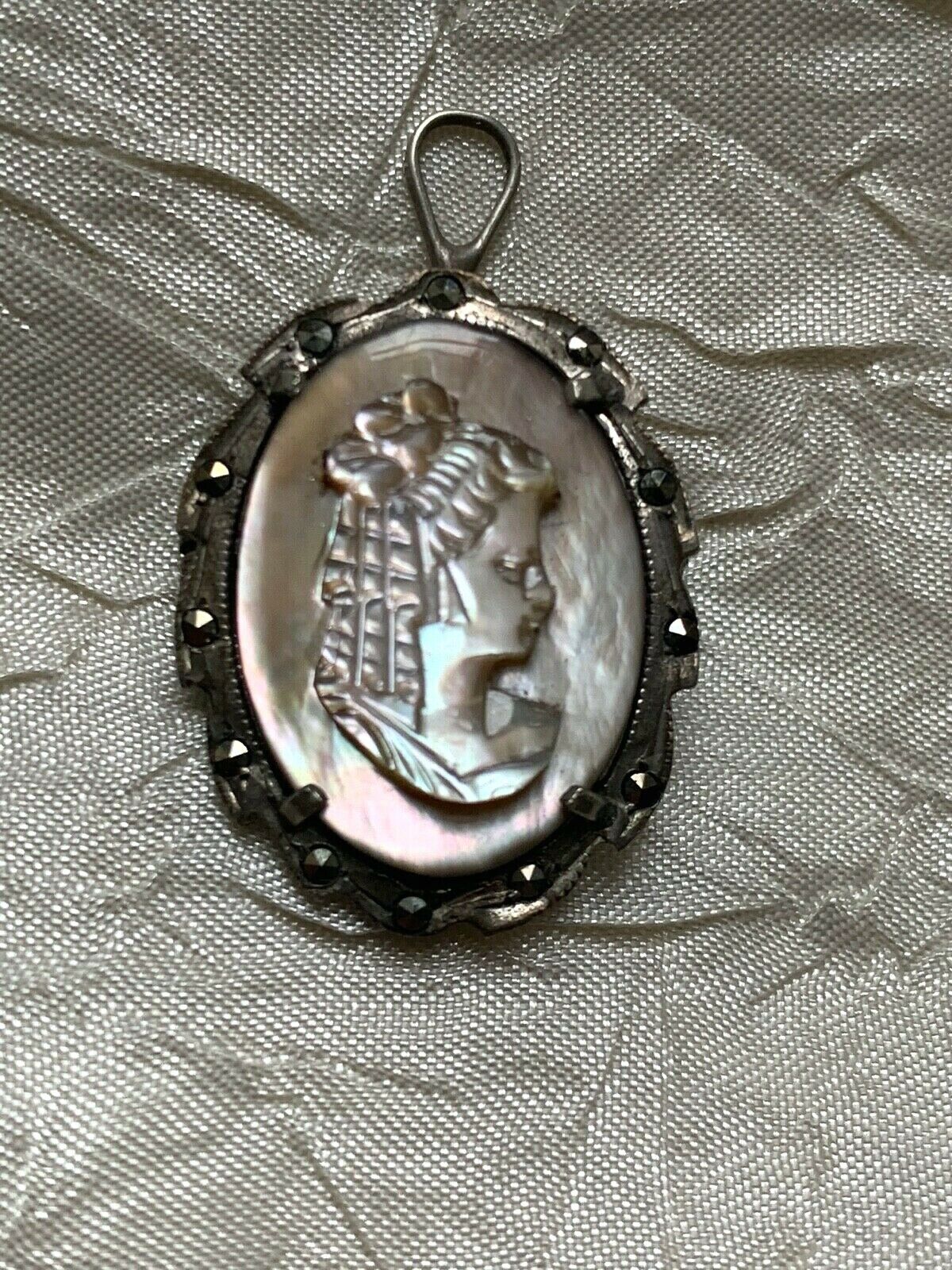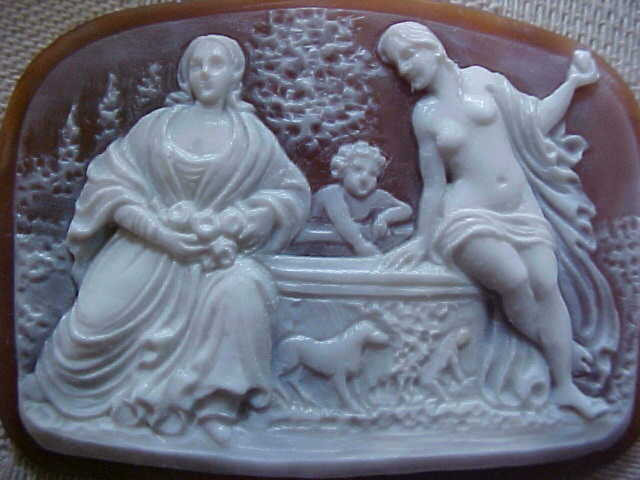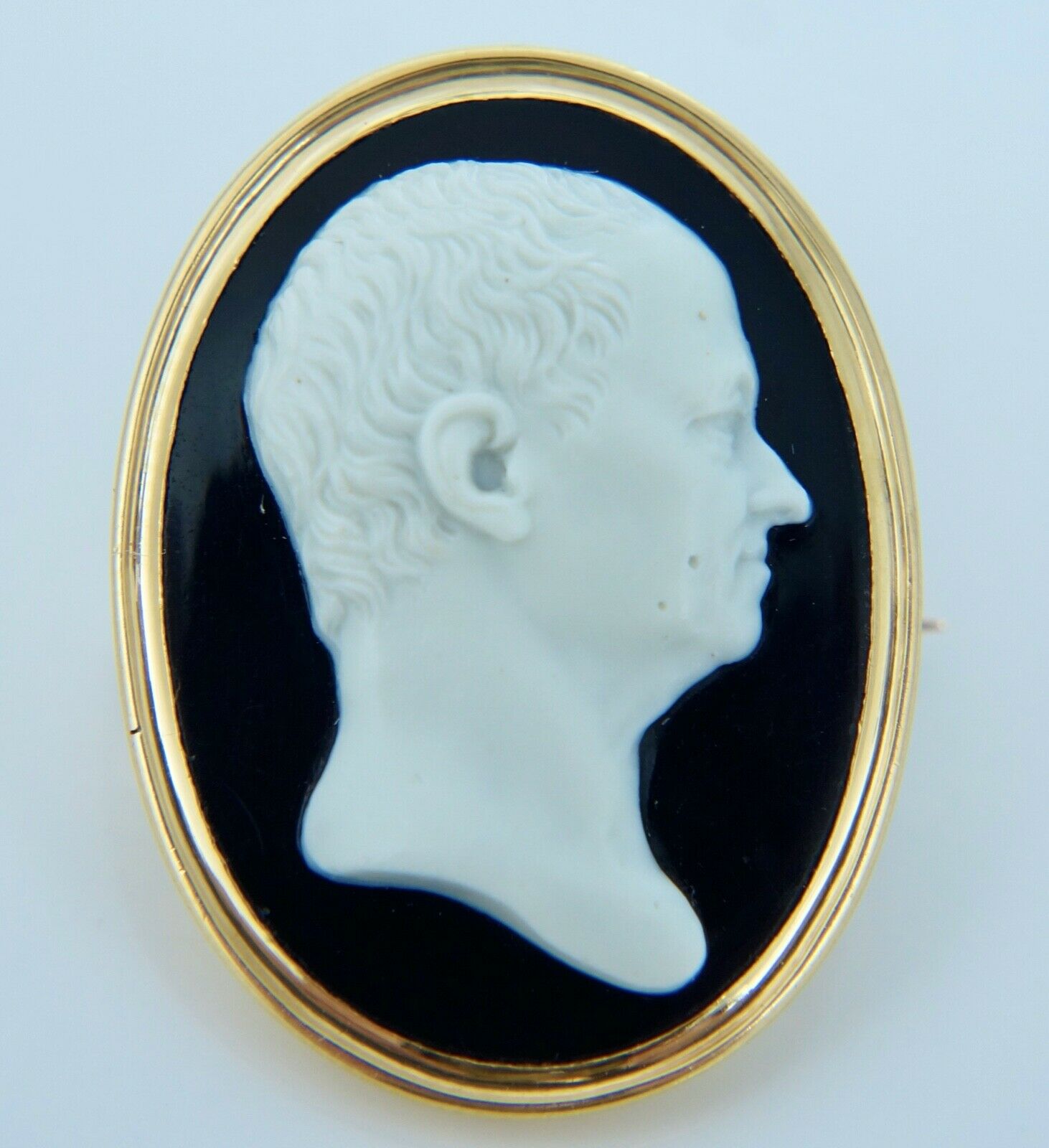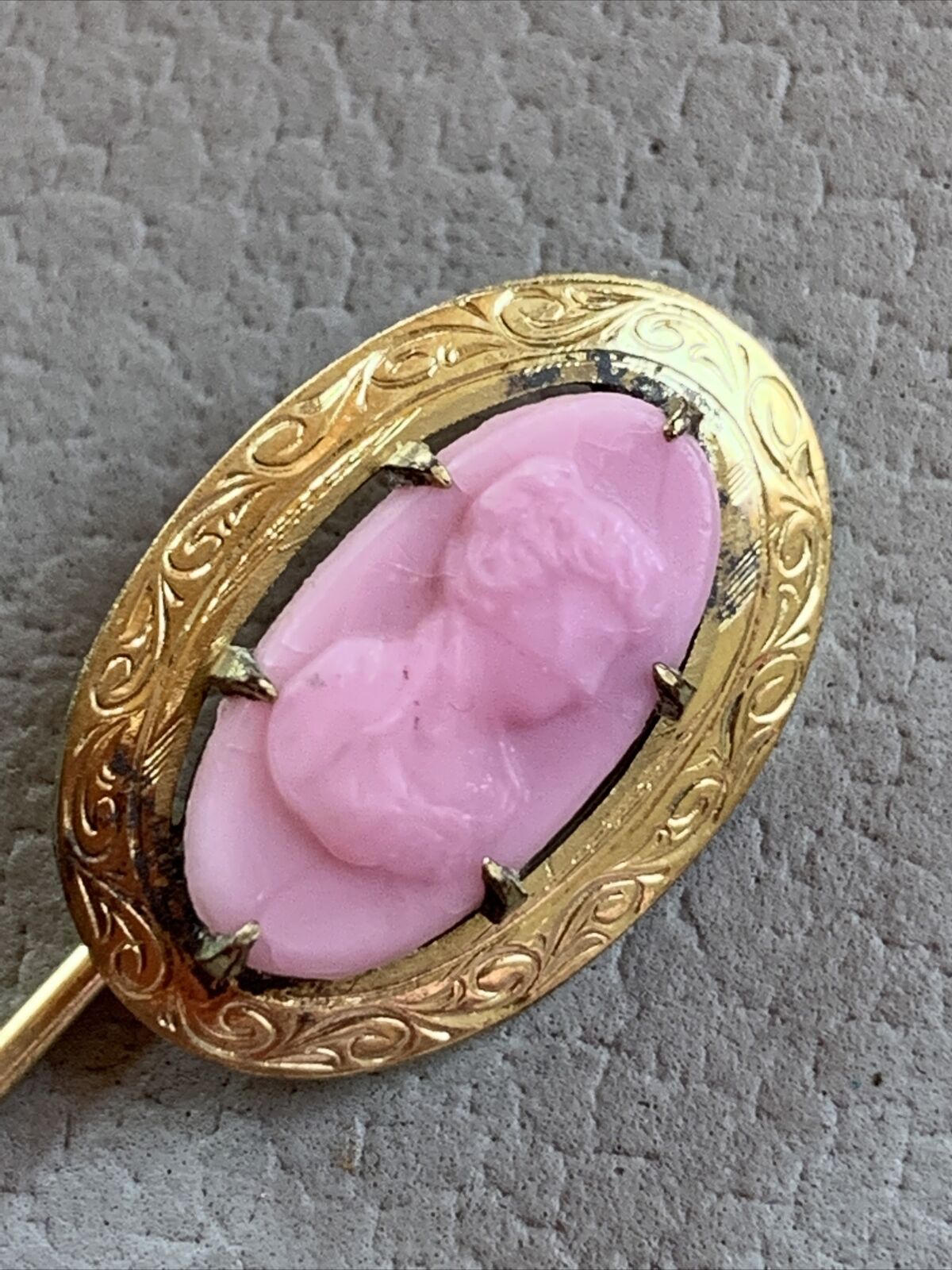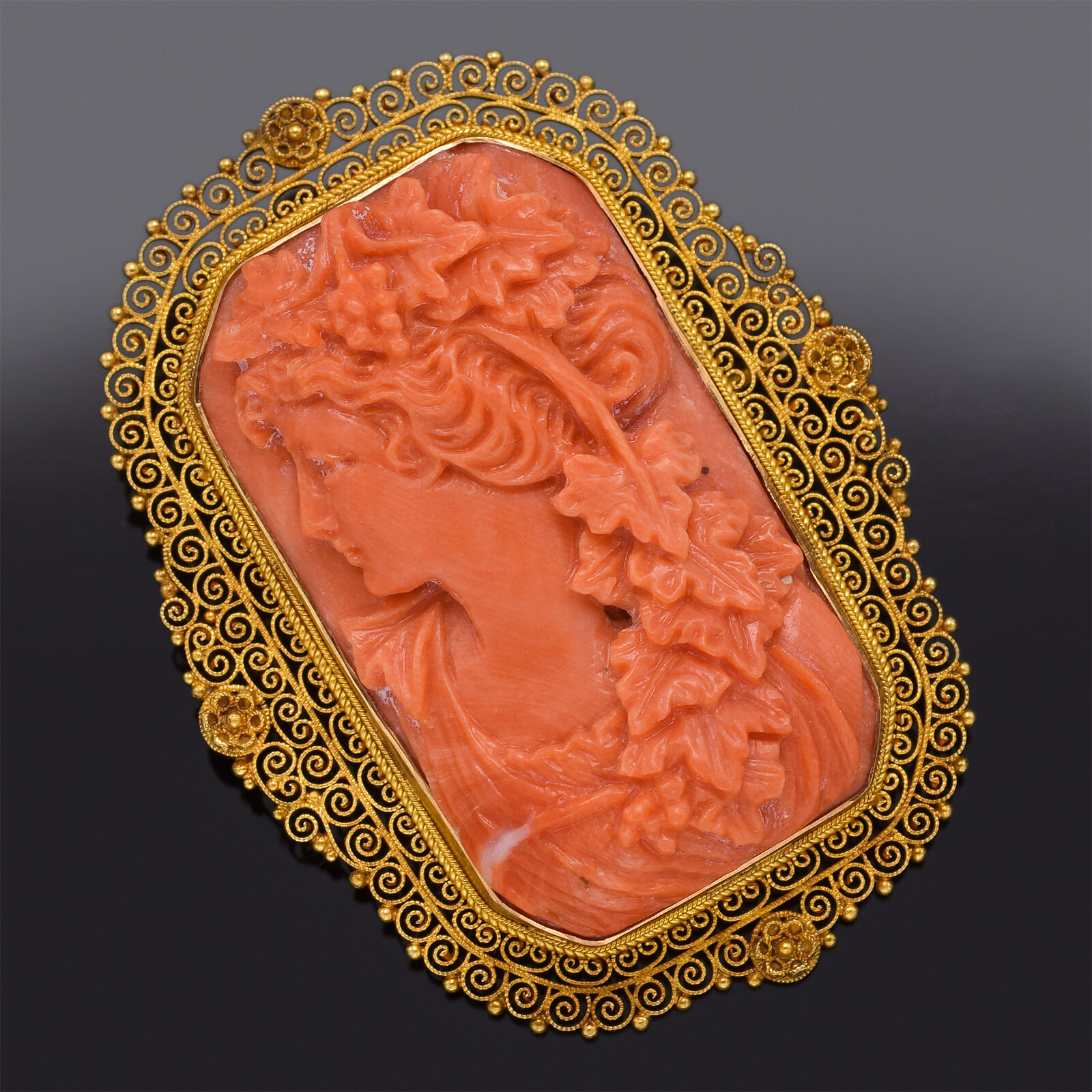-40%
CAMEO BROOCH=VICTORIAN 9K (carat) GOLD Mounted Carved Cornelian Shell=C-clasp.
$ 192.72
- Description
- Size Guide
Description
VICTORIAN9K (carat) Gold Mounted Carved Cornelian Shell Cameo Brooch
LARGE
A very nicely detailed carved cameo depicting the head, shoulders and bust of a beautiful young lady, the cameo is in a 9 carat gold brooch mount with a rope twist border.
Marked "9ct" on the bottom side as shown.
The C-clasp on the mounting indicates it is more than likely Victorian along with the carve marks.
Uncleaned.
Therefore gold shows some tarnishing.
Cornelian shell (Cypraeacassis Rufa)
Cassis Rufa = Has an interior reddish layer and the exterior for engraving is pale flesh-coloured.
Dimensions = 49mm ( 1.93") top to bottom x 39mm (1.54") side to side x 15mm (0.59") clasp pin to front.
Weight = 16.8 grams = 0.59 oz.
Sold as seen in the images. Images form part on the description.
*** Please feel free to ask questions ***
+++ Thank you for viewing our items +++
In fine jewellery
, the
cameo
is defined as an ornament carved in relief from a high-quality material such as stone, shell, coral, Gutta-percha, bog oak, lava, or mother-of-pearl. In costume
jewellery
,
cameos
are generally made from moulded plastic or glass.
Materials Used For Making Cameos:
The most common materials used for cameos are shells known as: Sardonyx shell (Cassis Madagascariensis), Carnelian shell (Cassis Rufa), Pink shell (Strombus Giga), Tiger shell (Cyprea Tigris), Lava, Coral, and Turquoise.
A Brief History of Cameo Jewellery
Cameos have a rich history with many different variations and meanings. We can trace their origins back to Egypt in 15,000 B.C. where petroglyphs, or figures carved in rocks, were used to record events. Through the centuries that followed, these figures evolved, and were remodelled based on trends that reflected the time in which they were produced.
During the reign of Alexander the Great in the 3rd century B.C., Greek and Roman cameos incorporated religious figures and mythological images. Also during this time, specifically in the Hellenistic era, women wore cameos to display their willingness to engage in the act of lovemaking.
Throughout the Renaissance, Pope Paul II was known as an avid cameo collector, and displayed his carved gems and stones on his fingers. Most of these depicted religious subjects and medieval carvings. The Quattrocento collectors, those from the 15th century Italian cultural and arts period, began distinguishing among the ancient cameos. The Pope’s prestigious holdings were acquired by the Medici, a powerful family who ruled Florence throughout the Renaissance and had a major influence on the growth of the arts and humanism, after his death.
Women of the upper class began wearing impressively carved gemstones as a sign of wealth and prestige in the 18th century. Carvers soon realised they could use Plaster of Paris moulds—quick-setting plaster named from its preparation from the abundant gypsum found near Paris—to recreate such gemstones as records of notable cameo collections. Scottish gem engraver and modeller James Tassie began using moulds of these revered collections to recreate glass pastes that could pass as authentic, carved jewels.
Carvers realised just how easily they could replicate expensive jewels. They discovered the use of
Cornelian
shells, which were soft, durable, and easy to carve. England’s Queen Victoria is credited with popularising shelled cameos in the 19th century. As interest grew, French military leader Napoleon took a particular liking to the craft. He brought carvers from all over Europe into France to create cameo jewellery for both men and women. He even commissioned furniture to be designed with cameos carved out of precious gemstones like opal, sapphire, and garnet.
The 19th century introduced a new type of cameo, those that were made from petrified lava. Coloured lava extracted from an archaeological dig at Pompeii proved useful for highly detailed carvings. Women during this time were embarking on their
Grand Tours
, which were traditional trips were taken by wealthy young European men and women when they had come of age, serving as an educational rite of passage. Women often purchased lava cameos as mementos from their travels, which established the objects as a symbol of status and wealth.
During the 20th century, as costume jewellery became mainstream, inexpensive replicas of antique cameo jewellery made out of shell and plastic emerged. Today, a vast array of cameo types are available on the market, with contemporary designers borrowing from antique designs of the past.
